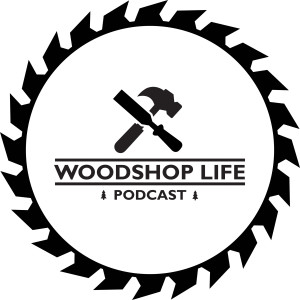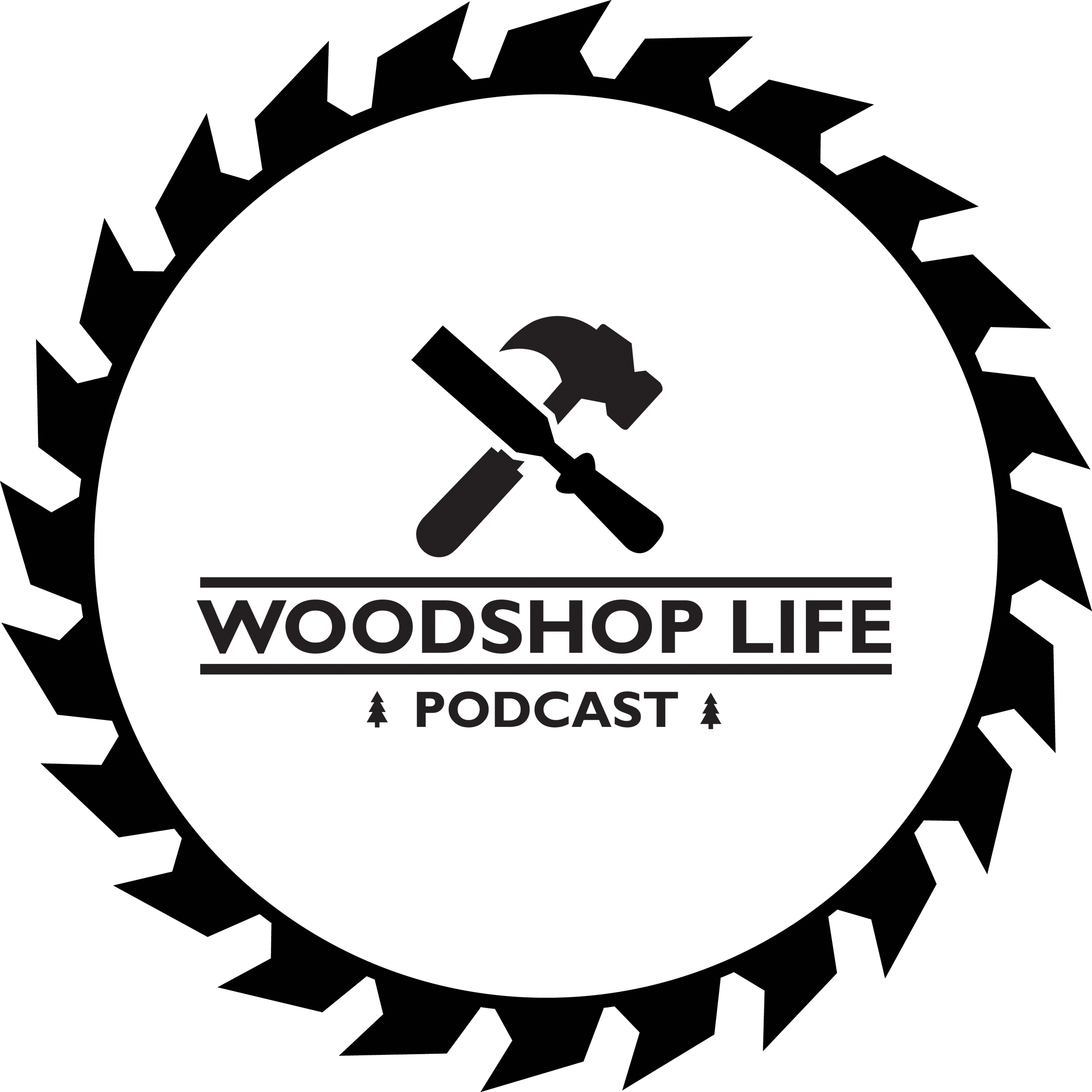Episodes

Friday May 16, 2025
Food Safe?, Wrangling Plywood, Exterior Doors and MORE!
Friday May 16, 2025
Friday May 16, 2025
Guys Questions
Hey guys, I really love your show. My question is about food safe finishes. I do a lot of CNC carving and one of my favorite is deviled egg trays. The first couple I made for my wife I just finished with some butcher block oil, the composition of an egg Has something in it I think and it quickly turned the reliefs in the wood surface black. I talked to my sister-in-law who’s a chemical engineer and she told me that polyurethane once it’s cured would be fine for this. I have done a few with this and it seems to be holding up OK but I am curious what your guys thoughts are on the long-term effect of this. Most of my egg trays are made out of a butcher block style material that has lots of maple cherry ash a little bit of oak and various leftovers. Unfortunately, I can’t use walnut in my wood shop due to my wife’s tree nut allergy again guys. I really appreciate your podcast and look forward to listening to it. Albert
Thanks for the great podcast, I learn something from every episode.
I recently made a few band saw boxes for Christmas gifts. They are a good way to use up some offcut lumber and the family seems to appreciate something handmade.
The 3 drawer box with a curved top and side (pictures attached) caused me a bit of trouble.
Joni had preciously asked for a sideboard style cabinet to place between out living and dinning room areas. After 2-3 month we still hadn't found a design she liked....until she saw the curved band saw box. I quote "I love that design and want one like that only much bigger"
My question is what suggestions do you have for making the curved top and sides, I am thinking the sides could be made using walnut plywood by cutting kerfs and bending the plywood over a frame but I am open to other ideas.
The top has me stumped, I have made segmented arches for a table support but they were only 4" wide and I cut the arch on a band saw. That would not work for a wide dresser top.
Approximate dimensions would be 30" -35" wide and 45- 55" tall and 20-22" deep
Thanks in advance for you help DH
I realize this isn’t a fine precision woodworking question, but I figure you guys have probably dealt with manhandling sheets of plywood. We have about 140 sheets of plywood that we need to put down on a floor. The median age of the guys doing this is somewhere between 65 and 70. Any suggestions for how to safely handle this many sheets of plywood to minimize strains and injuries ?
Thanks, Mark
Huys Questions
Good Morning, I appreciate the podcast as I continue to learn its been a great resource, thank you!
Quick background. I grew up watching PBS's Norm Abram and This Old House but never had much opportunity to learn wood working. As an adult I started learning both construction building and cabinet/furniture making helping others, reading and youtube etc. Starting in basement workshops with mostly benchtop tools. ~15 years into the journey I am starting to get a decent foundation. Recently I built a house with a planned garage workshop and have started outfitting it. Bones are there, lots of organization needed but I have now have 3hp grizzly table saw, bosch miter saw with large counter style station, 8" Grizzly jointer, 24" Grizzly Drum Sander, Grizzly Bandsaw and dust collector Planer still needs upgrading, have a Ridgid 13" but watching for a used 20" helical head. I have been busy chasing used deals! Also recently setup a 10'x10' popup tent with furnace filter setup tied into 12" exhaust fan as a spray booth, works great! Spraying with a Fuji mini mite 5 stage and PPS cup system. Space is 32'x32' when cars are out with 12' ceiling, in floor heat. Rural northern New York. Not a Rockler or similar store within a days drive but we have ample local sawmills to find solid wood if your willing to mill it and access to cabinet grade plywood delivered from suppliers.
With this shop setup I am now building cabinets, furniture, trim, doors etc for our house. Starting in some areas I don't mind making some mistakes. Two areas that I am struggling to figure out:
Finishes-your recent episode had some decent comments but I would love a thorough discussion on when you would choose a certain finish over another. In particular thinking of kitchen cabinets, vanities, built in's, kitchen table. High traffic areas. I have played around with conversion varnish from Woodwright. Seems like very durable stuff and I don't mind cleaning up with solvent but when is that necessary vs going with an easier to work with finish such as Sherwin Williams Emerald? Or middle ground lacquer??I do have Bob Flexners book but would love to hear your experiences/ opinions? If I do use conversion varnish how do you handle any touch ups?
I have quite a lot of experience with airless on sheetrock so its not a huge jump but any suggestions on HVLP setups, when to use which tips etc. would be helpful.
*Doors- I appreciated the conversation on doors recently. I have several very custom interior and exterior doors I want to tackle. I agree with your comments on buying pre hung for standard doors but between custom nature of what we want and because I just want to do it I am going to try to build my own. I want to buy the festool domino machines in time anyhow and I think that would be a good way to build the doors. I would enjoy hearing a conversation on specifics on how you would choose to build interior vs exterior doors, rail and style material vs. panel material vs jamb material. Is there a way to insulate the exterior door? Finishes? If you had the shop described above and both domino size machines what would you do?
Thank you! Matt Wendig
This one is a wood selection question. I am looking for a wood that has both good elasticity and shock resistance. I am building a Japanese makiwara board, which is a training tool that provides progressive resistance to striking force by the martial artist. The training board is about 55" tall, 5" wide and is tapered - so thick at the base and gradually tapers to the top. This allows for "flex" when the board is struck. In Japan - Japanese beech is typically used, but not readily available near me. I am thinking along the lines of Ash or Elm for my build. I appreciate your thoughts. Crafted Carpentry Tampa
Hello gentlemen and thank you for the wonderful podcast.
I live in the niagara region in Ontario Canada and for the last while I've been looking at upgrading my current table saw (Ridgid R4520) to something that runs on 220v for more power or possibly replacing it all together with a bandsaw.
I have an oversized single car garage that houses my furnace, hot water tank, ATV, motorcycle, mechanical shop and woodshop so space is at a premium and that is the motivation to possibly do away with a table saw all together.
I have a router table, mitre saw and track saw so I feel all the functions I may lose not having a table saw will still be covered by these tools plus I have a Ridgid job site table saw (R4518ns) I use for the odd job I do off site.
I currently have an older 110v 14" king bandsaw that I find severely underpowered and that I want to replace anyways, so with the sale of my current bandsaw and table saw plus my current budget and with some convincing of my wife I'm thinking I'll have roughly $3000-3300CAD to buy either one bandsaw or have to use those fund to buy both a bandsaw and table saw.
I am 6'4" and if my memory serves me correctly guy has said Laguna bandsaw tables are closer to the ground and I've quickly looked at some king bandsaw and craftex bandsaws but I'm not sold on them either.
So my question question to you guys is, what would you do? Use all the funds on a bandsaw and if so which one and what type of blades should I purchase with it? Or split up the funds to purchase 2 machines and again which ones? And do you go new or used in both of those situations?
Thank you ahead of time for taking the time to read and respond to my inquiry. James


No comments yet. Be the first to say something!